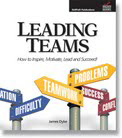In the previous edition we taught you about the power of small goals and how they can really help when your team is feeling overwhelmed. As it happens, there is real, solid neuroscience behind this concept. In his thought-provoking book, The Happiness Advantage, Shawn Achor enlightens us by explaining the structure and function of our brains and how we act as a result.
There are two powerful components of the brain that determine thoughts and actions. The first is the rational system that resides in the Pre-frontal Cortex. This is where logical, analytical, and strategic thinking takes place. It allows us to weigh information from many sources; synthesize solutions to problems; and construct plans for the future. It is complemented by the limbic (or emotional) system, which serves a much different purpose.
The limbic system resides in the Amygdala, which takes control and functions when we are under stress or panic. It produces mindless “knee-jerk” behavior that is emotional and reactive, rather than logical and thoughtful. It is designed to provide us with an immediate response to a dangerous or life-threatening situation.
Most of our day-to-day activities are better directed by the rational part of our mind residing in the pre-frontal cortex. But when we are under pressure and stressed out, cortisol levels start to rise in our bodies. This can build to a critical point and leave us vulnerable to a “trigger” event. When that happens, any setback or bad news can create a response in the amygdala. That response overrules our logical mindset and results in a panic-based, mindless reaction. That’s a recipe for bad decisions and dangerous actions.
It can also increase our anger!
According to neuroscientist R. Douglas Fields, when we face chronic stress or trauma, our brain “rewires the rage circuits.” In other words, the sustained level of stress and fear we experience every day when we’re under pressure depletes our emotional resources, making us much more likely to get mad, even at minor provocations.
Here’s what recent studies have revealed:
1. At one large company, managers who felt most pressured by job demands ran teams with the lowest performance and profitability numbers.
2. Financial losses are “processed” in the same areas of the brain that react to life-threatening danger.
Up Close and Personal
An executive I know personally was hired by an organization that badly needed expansion, growth, and success in his area of expertise. Within a year, he was able to put initiatives in place that bore fruit effectively and dramatically. By the next year, however, he was summarily terminated in spite of his success. What happened? A badly managed major construction project had gone off the rails; litigation resulted; and the organization was hemorrhaging cash. The executive was one of the higher-paid staff. And in spite of the success he was bringing to the organization, panicking leadership felt his termination was a quick and easy solution to the financial pressure on the organization. As a result, the executive’s initiatives prematurely died on the vine, and the organization paid the price for the loss of the positive impact the programs were making on the bottom line.
So… If you put your team under pressure by over-challenging them, you may be setting them up for panic-based failure. Instead, break down those big, challenging goals into smaller, believable and achievable steps. Then celebrate each success. You will be building your team’s confidence and actually equipping them to believe more strongly in their potential success, which in turn will create a likelier chance that they will actually achieve that potential!
Up Close and Personal
Danielle Menkens, executive producer at Ready Set Rocket, a New York City-based marketing and advertising firm, revealed how she adjusted her management style, to help employees work more effectively under the pressures of the CoVid pandemic.
In a recent issue of Harvard Business Review, she described how she made it a point to “celebrate smaller wins” more than she usually would and make liberal use of Slack to praise employees’ good work and individual successes.
These are simple practices that any manager can adopt with their team!
We’ll be sharing more practical insights from this field of study in upcoming issues of this newsletter. Until then, if you need help building a successful, high-performing team in your organization, then give us a call – we can help! We can give you and your team exactly what is needed to perform, produce, and succeed. We can bring fresh ideas and practical tools to your organization through a one or two-day training event; a half-day event; or even a two-hour “lunch and learn” if your time and resources are limited. Call us today!
In the meantime, stay tuned to this newsletter—we have more great ideas planned for future issues!
Until next time… Yours for better leaders and better organizations,
Dr. Jim Dyke – “The Boss Doctor” ™ helping you to BE a better boss and to HAVE a better boss!





